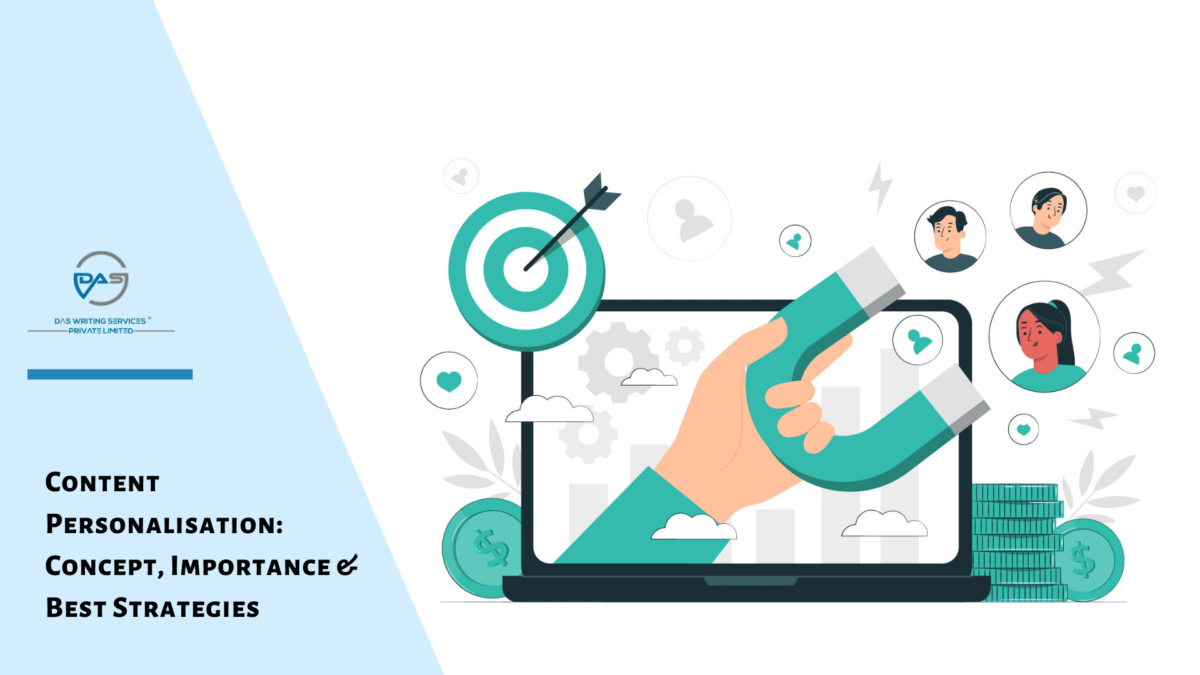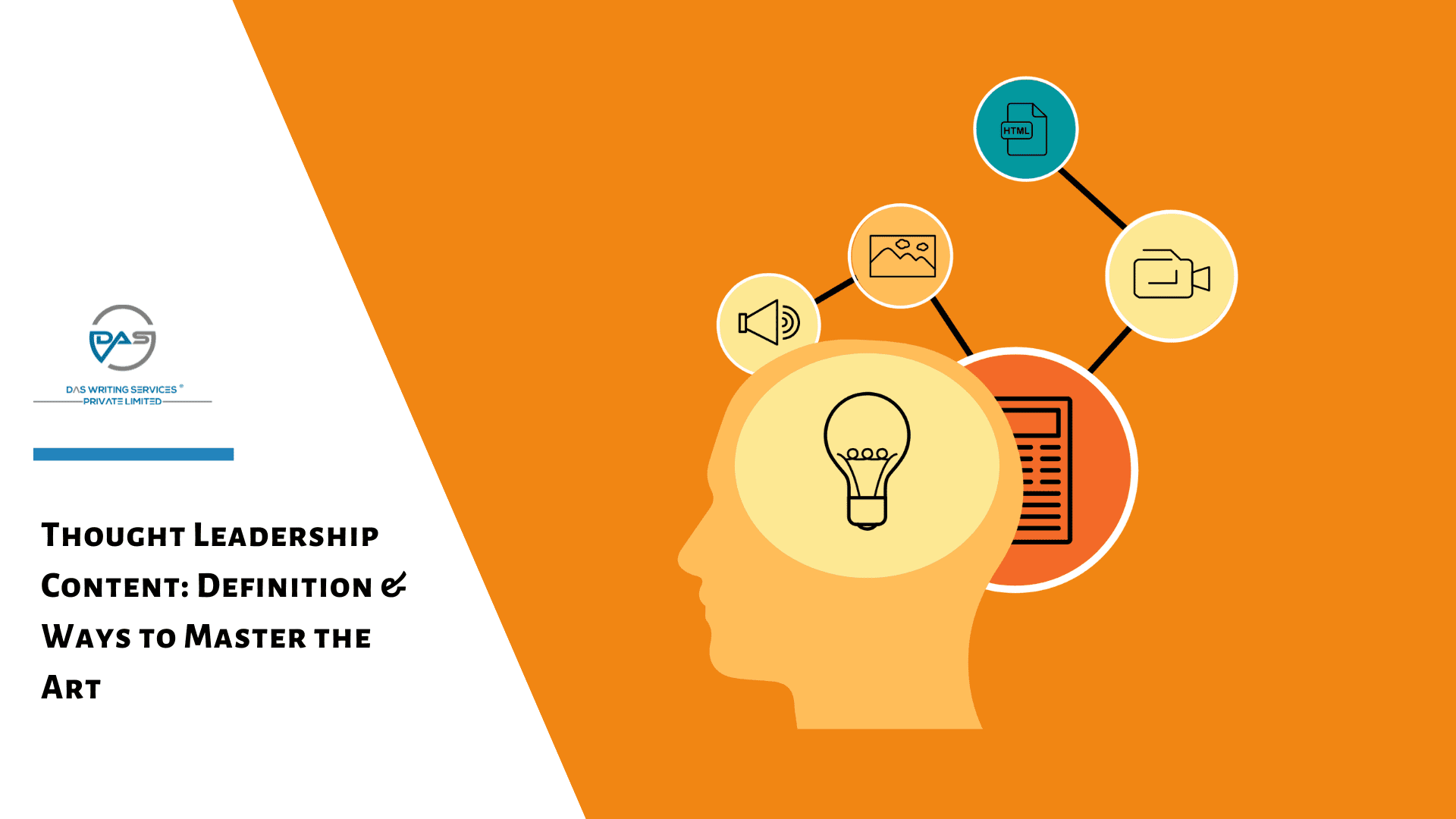We are all familiar with the term “personalisation”, especially when it comes to gifts and purchases. But did you know that you can use it as a game changer for your business too?
Especially, if you are in the marketing business, catering to your customer’s needs is your first priority. That is where content personalisation comes into play.
It is a powerful helping hand to cut through the noise of endless general content and engage audiences based on their individual needs.
In this blog, you are going to find out what personalisation of content means and its importance in digital marketing. We will also explore some of the best strategies to personalise any content that brings you closer to your audience.
Or experience personalised content with our free content sample today
What is Content Personalisation?
Content personalisation is a process through which you tailor the content to the specific needs and preferences of a user.
For instance, as a part of their brand marketing strategy, businesses use different types of consumer data to form tailored content (emails, ads, webpages, etc.). Therefore, each of these contents tends to match the intent, interest, or preferences of individual users.
It is like having your personal shopper who will show you exactly the type of clothes you might like based on your purchase history or inclinations.
For example, Netflix has a system that recommends shows based on when you watched them.
Here are some effective web content personalisation examples:
- Targeted Emails
- Retargeted Ads on Social Media
- Product Recommendations
- Gamification
- Interactive Quizzes
Types of Information Used for Personalising Content
In order to shape and form content that lines with your target audience, you need to have specific information about them.
Therefore, collecting the right consumer information is an important part of the content personalisation strategy.
Here’s a list of the two most important types of user data used for content personalisation:
1. Demographic Information
This answers the who and where questions about your potential customers and your target market. It will also offer an understanding of their lifestyle, choices and preferences. Demographic insight of the consumers may include:
- Age
- Sex
- Location
- Income
- Job
- Specific interests
2. Contextual and Behavioural Information
Both contextual and behavioural data come from the online activities and searches performed by a user. This is the best way to gain an insight into the likes and dislikes, purchasing intent and more. They include:
- Buying pattern
- Types of websites frequently visited
- Search History
- Pages visited
- Type of device or platform they use
- Session duration
- Advertisement engagements
4 Effective Methods of Content Personalisation
The first thing to remember while catering to individual choices is audience segmentation. The four methods discussed below are based on the type of audience you are targeting.
Let’s take a look:
1. Demographic Content Personalisation
It involves tailoring content based on specific demographic characteristics (age, gender, and location) and some behavioural factors such as languages known, occupation, past brand interactions, type of device or platform used, etc.
A simple example: If you are a clothing retailer, you can customise the website banners to showcase winter wear for customers in colder regions while featuring summer collections for warmer climates.
Remember, this segmentation is more generalised and may not fetch enough information for a high degree of content personalisation.
2. Persona-Based Personalisation
Persona-based personalisation goes beyond a market segment and focuses on creating a more detailed profile of the targeted or desired audience.
This method uses different types of demographics, behavioural and contextual data; content marketers can develop a persona that matches their target customer segments.
Segmentation is done using common characteristics like shopping patterns, likes, pain points, and interests.
Once done, you can craft content that directly addresses the needs and preferences of specific persona segments.
In addition, every persona also needs a face that represents how they look like. This helps in maintaining consistency while personalising and adjusting the brand voice while social selling on different platforms.
3. Buyer-Journey Personalisation
Buyer-journey personalisation focuses on delivering content that aligns with the stages of a purchasing journey for a customer: awareness, consideration, and decision-making.
It involves creating visual maps that illustrate the progression of users through the sales funnel. These maps help in personalising content that aligns with the buyer’s specific stage in their journey.
For instance, when a user visits a company’s website for the first time, they are likely in the awareness stage, seeking information to guide their purchase decision. A software company might create educational blog posts to raise awareness, comparison guides to build trust during the decision-making phase.
By mapping content to each stage, marketers can address specific pain points and guide users through the funnel.
4. Individual-Level Personalisation
This is a more data-driven approach where content is personalised on an individual level, unlike the three other methods.
In order to customise content to that granular level, marketers leverage big data or AI on individual behaviour, like previous purchases, browsing history, interaction with the brand, etc.
This method allows you to deliver unique content in real time based on each user’s exclusive profile.
For instance, an online beauty product retailer can aim personalised product recommendations of face cream if a user has made searches on face care, facelift, anti-ageing, etc.
Why is Content Personalisation So Important Today?
Here are 4 reasons why you need to embrace personalised content in your marketing strategy:
1. Enhances User Experience
Personalisation allows marketing teams to get a better understanding of what customers are looking for today and what they may be interested in in the future.
Therefore, it enhances the user experience by making it more relevant and engaging.
For example, Amazon uses personalisation to recommend products based on users’ browsing and purchasing history, making shopping more convenient and enjoyable.
2. Boosts Engagement and Conversion
When your audience receives a personalised experience, they are more likely to resonate with your brand.
This will automatically lead to higher engagement and conversion rates as your offerings will be more relevant to their choice.
According to Experian’s Email Marketing Study, Personalised promotional mailings resulted in a 29% increase in unique open rates and a 41% increase in unique click rates.
3. Builds a Loyal Customer Base
By delivering content that is relevant and valuable to users, businesses can build stronger relationships and foster customer loyalty.
Research conducted by McKinsey indicates that 71% of consumers want companies to provide personalised experiences. Furthermore, 76% of them express disappointment when this does not occur.
Therefore, when you are sending a personalised message to the right person, your brand has a higher chance of standing out.
4. Gaining a Better Understanding of Your Customers
Content personalisation helps marketers understand their customers better.
By analysing user information and behaviours, they gain insight into what their customers want, care about, and need.
This allows them to deliver the right content, recommendations, and experiences that build stronger relationships and drive engagement.
Ultimately you will achieve higher customer satisfaction and business results.
A Step-by-Step Way to Create Personalised Content
Personalising your digital marketing content will get easier with time once you have established your potential leads and industry trends.
Nonetheless, here is a step-by-step guide on how you can generate and engage more leads through the power of personalised content.
1. Collect and Analyse Data of Your Users
Content personalisation begins with the collection and analysis of user data. This data will include demographics, browsing patterns, and purchase histories, as discussed earlier. Tools such as Google Analytics can offer valuable insights into user behaviour.
2. Segment Your Audience into Specific Groups
Once the data collection is complete, the next stage is to segment the audience according to characteristics or behavioural patterns. For instance, the audience may be segmented according to age, geographical area, or interests.
3. Create Content That is Personalised to Specific Groups
Once your audience has been segmented, you can tailor content to each group. This can include personalised emails, personalised product recommendations, or personalised blog posts.
4. Test and Optimise Accordingly
Finally, make sure to test your custom content and adjust it according to the results. This is where A/B testing comes in handy. Divide your audience into test and control groups and see how your personalised content stacks up against un-personalised content. Adjust your strategy accordingly.
5. Monitor Your Personalisation Campaigns
Finally, keep track of how well your personalisation campaigns are doing. Look at key stats like conversion rates, clicks, and how long people spend on your site. Use the data to keep improving your strategies.
5 Popular Types of Content Personalisation
Personalisation process greatly involves knowing your audience on a deeper level to that you can cater give them what they want or need.
This also means using the right type of content for individual needs. Here are the 5 most effectives types of content that can be personalised for your users:
1. Targeted Emails
Personalised emails resonate deeply with recipients, cutting through the noise of generic messages. Utilising data on customer behaviour, preferences, and past interactions, businesses can craft tailor-made email campaigns. By delivering relevant content, such as product recommendations, exclusive offers, and personalised updates, companies can boost open rates and click-throughs, strengthening their connection with customers.
2. Retargeted Ads on Social Media
Ever felt like a brand is following you online? That’s retargeting in action! By leveraging browsing history and user data, businesses can serve custom ads to users on social media content platforms. This approach reminds potential customers about products or services they showed interest in, subtly nudging them towards conversion. The result? Increased brand visibility, improved ad relevance, and higher chances of conversion.
3. Personalised Product Recommendations
Remember how Amazon suggests products you might like based on your purchase history? That’s content personalisation in action. E-commerce giants use sophisticated algorithms to analyse customer behaviour, predict preferences, and deliver personalised product recommendations. This strategy not only improves customer satisfaction by offering relevant options but also boosts cross-selling and upselling opportunities, ultimately driving revenue.
4. Gamification
Engagement is the name of the game, and gamification is a powerful tool to achieve it. Use elements of gaming, such as points, badges, and rewards, into digital experiences, to entice users to participate actively. Gamification can give both immersive and personalised experience if you are targeting the right audience for it.
It taps into the human desire for challenge and achievement, creating memorable interactions that keep users coming back for more.
5. Interactive Quizzes
Want to know which superhero you’d be or what your spirit animal is? That’s what interactive quizzes are all about, and honestly, they are irresistible! Brands leverage this content personalisation technique to entertain and engage users while simultaneously collecting valuable data. Tailored quizzes provide insights into user preferences and personalities, enabling businesses to refine their content marketing strategies to create targeted offers.
Personalising content is a powerful strategy for connecting with your audience on a more personal level. By implementing different methods of audience segmentation, you can deliver relevant and engaging content that resonates with your target audience.
Whether it’s creating one-of-a-kind email content or retargeting via social media, there’s no limit to what personalisation can do for your brand.
Remember, successful personalisation requires a deep understanding of your customers and continuous analysis of data to refine and optimise your content. Embrace these methods to enhance customer experiences, boost engagement, and drive conversions.
Frequently Asked Questions
1. What does personalisation mean in UX?
Personalisation in UX is a way for businesses to customise customer journeys and experiences according to individual needs and preferences. By tailoring content and interactions, businesses can offer a more relevant and engaging user experience, ultimately fostering stronger connections with their customers.
2. Why personalised emails work better?
Personalisation in email marketing has a positive impact on open rates, response rates, click-through rates, and conversion rates. Additionally, it increases the likelihood that prospects will make a purchase decision after reading your email. Compared to email marketing that is not personalised, personalised emails receive a 10% increase in conversion rates.
3. What is personalised design?
Personalised design is all about making sure your designs are meaningful to your customers. It should go beyond just giving them options, though – it should actively encourage them to express themselves through the design process. But that doesn’t mean just giving them a copy of Photoshop or a drawing pad.






Leave a comment